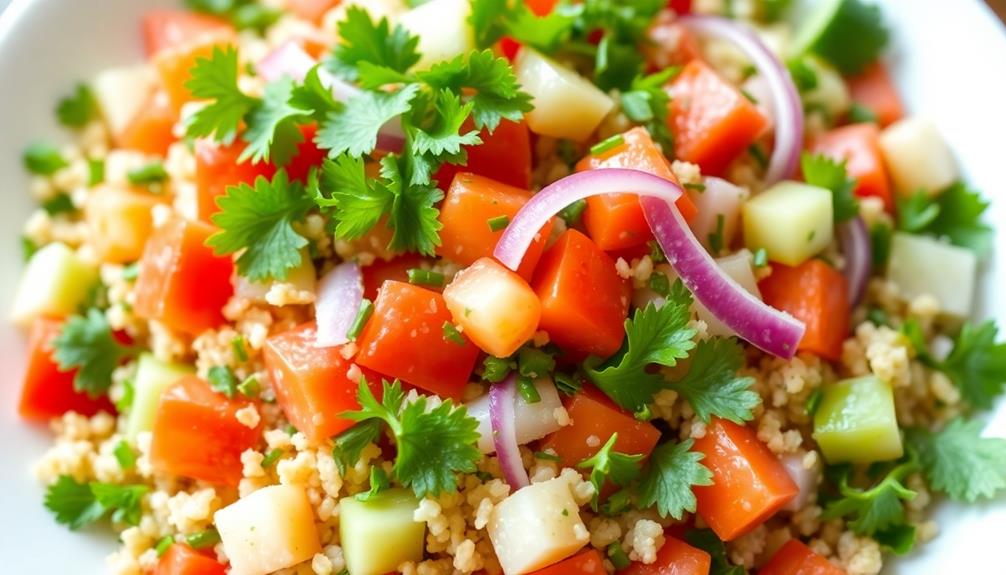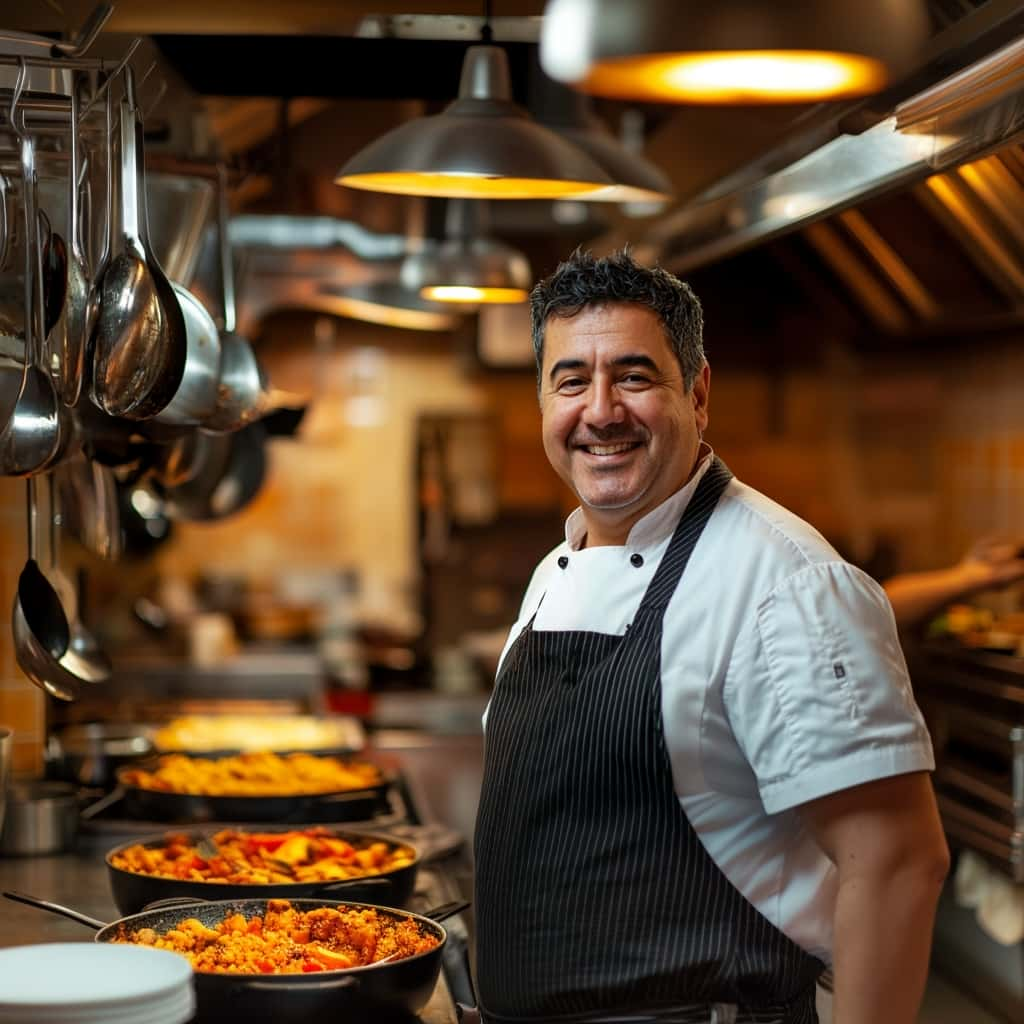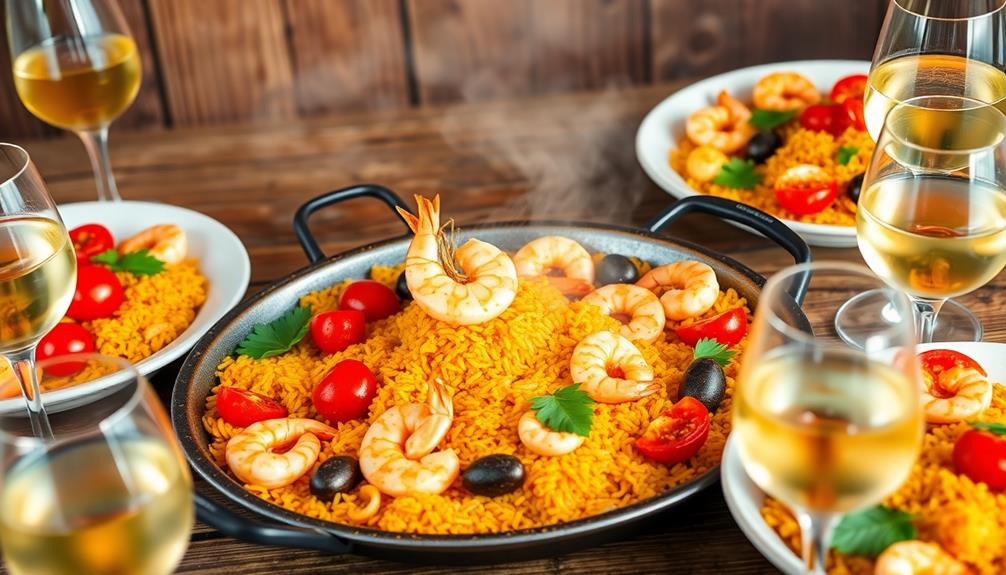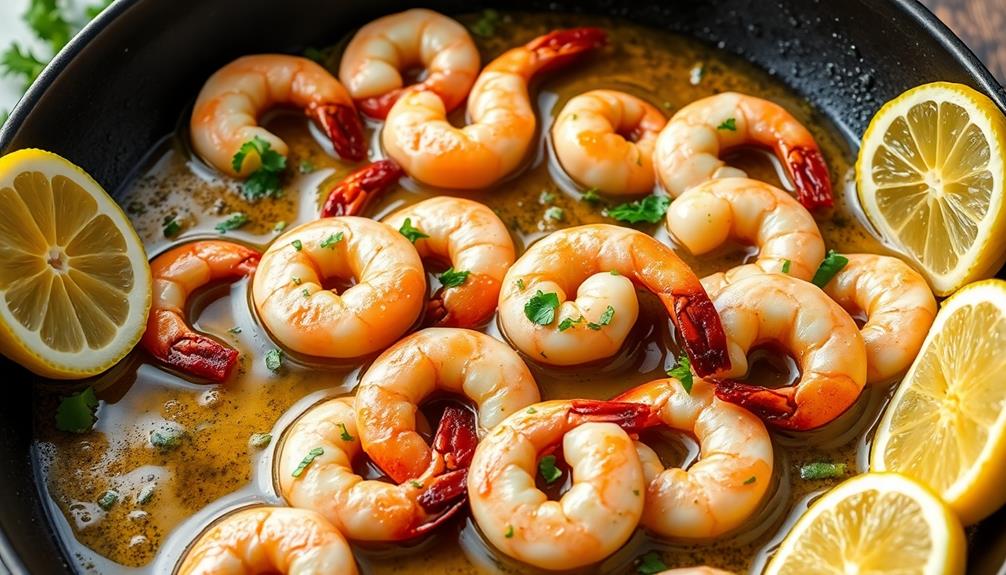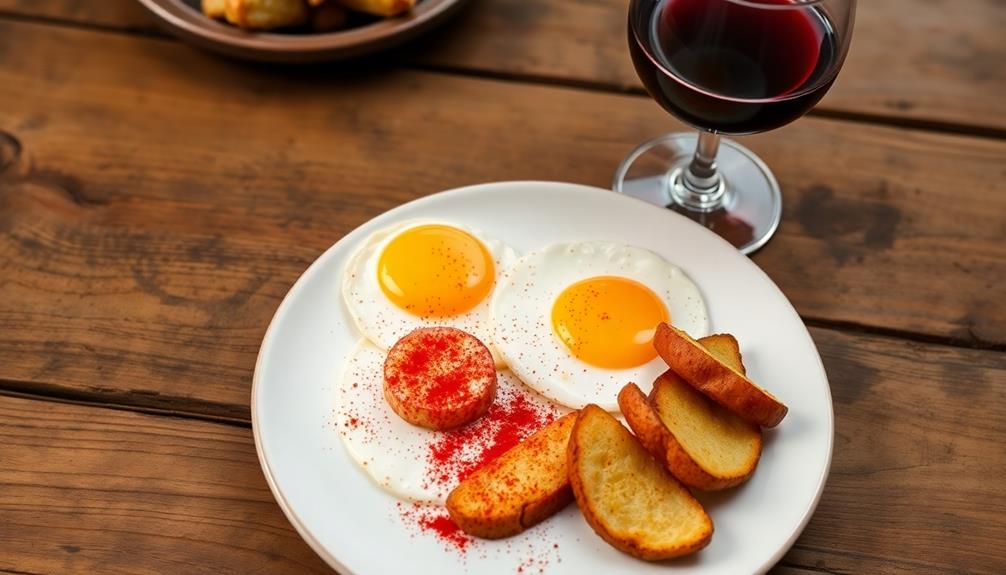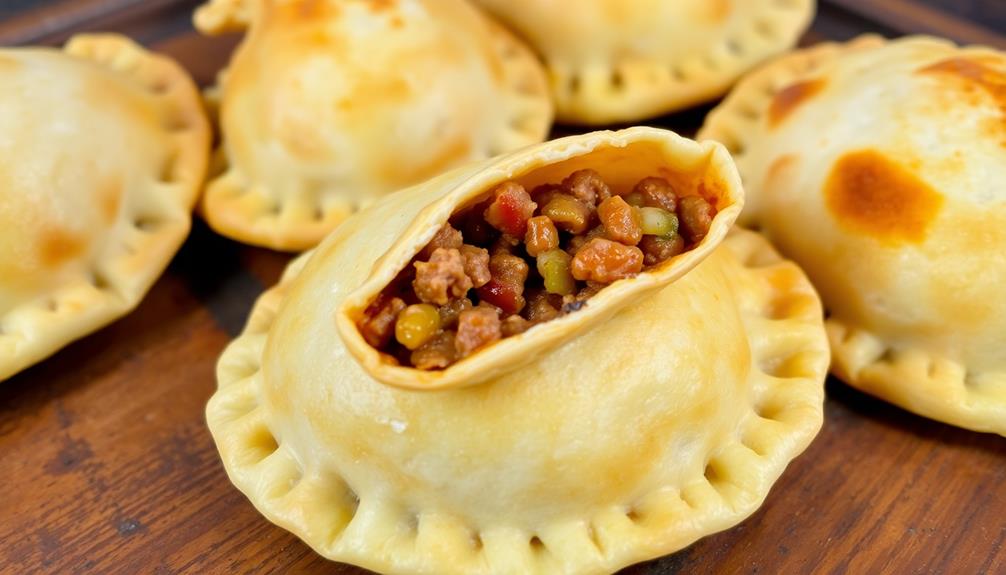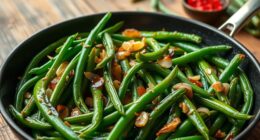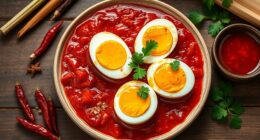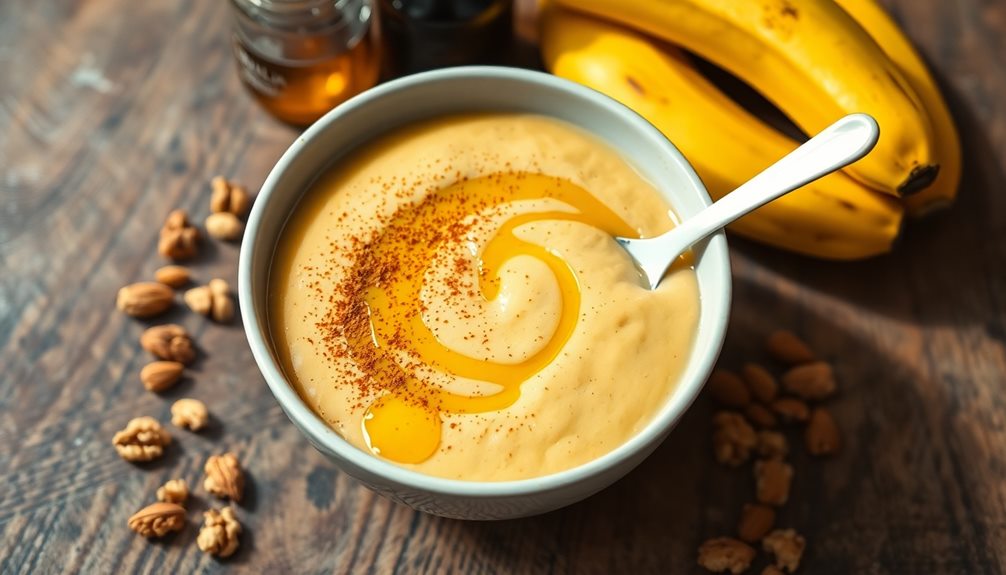Valencian paella is a vibrant and flavorful Spanish dish that's rooted in the culinary traditions of the Valencian region. It all started with resourceful farmworkers who combined rice, saffron, and whatever ingredients they had on hand, like rabbit and chicken. Over time, the dish evolved to include tasty seafood like shrimp and squid. The essential paella pan adds a signature touch, while the saffron-tinged rice, tender veggies, and succulent proteins create an unforgettable dining experience. Paella is celebrated as a symbol of Spanish culture, and it's often enjoyed during family gatherings and local festivals – a shared experience that truly captures the essence of Valencian cuisine.
Key Takeaways
- Valencian paella is an iconic Spanish dish originating from the Valencia region, representing the essence of Valencian culture and culinary tradition.
- The essential ingredients of Valencian paella include short-grain Spanish rice, chicken or rabbit, Valencian white beans, saffron, olive oil, and vegetables.
- Valencian paella is typically cooked in a wide, shallow pan called a "paellera" over an open flame or specialized paella burner, emphasizing layering flavors and achieving the perfect socarrat (crispy bottom).
- Valencian paella has evolved over time, with modern interpretations including fusion flavors, vegan and gluten-free versions, and creative presentations influenced by social media trends.
- Valencian paella is celebrated as a symbol of Spanish culture, recognized by UNESCO as an Intangible Cultural Heritage of Humanity, and often served during family gatherings and local festivals in Valencia.
History
Paella, the iconic Spanish rice dish, traces its origins to the Valencian region of eastern Spain. This beloved culinary creation has a rich history that dates back centuries.
Believed to have been developed by farmworkers in the fields, paella was initially a simple dish made with rice, saffron, and whatever ingredients were available, such as rabbit, chicken, or vegetables.
Over time, the recipe evolved, with the addition of seafood like shrimp, mussels, and squid. The dish's name is derived from the paella pan, a large, shallow pan traditionally used to cook the rice over an open fire.
Today, paella has become a symbol of Spanish culture, celebrated in annual festivals and enjoyed by locals and visitors alike.
Whether cooked over a wood fire or on a stovetop, paella remains a beloved and iconic part of Valencian heritage.
Recipe
Paella is a quintessential Spanish dish that has been a staple in the Valencian region for centuries. It's a rice-based dish that showcases the vibrant flavors and fresh ingredients of the Mediterranean. The key to a truly authentic Valencian paella lies in the careful selection and preparation of the ingredients.
The foundation of the dish is the short-grain Spanish rice, which is essential for achieving the perfect texture and absorption of the flavorful broth. The rice is cooked in a large, shallow pan over an open fire, allowing for even heat distribution and the creation of the signature crispy layer on the bottom, known as the "socarrat." The dish is then topped with a variety of ingredients such as seafood, chicken, or vegetables, each adding their own unique flavors and textures to the final product. Once the paella is finished cooking, it is typically enjoyed with a side of traditional Spanish dessert, such as flan or churros, to complete the meal with a touch of sweetness. This combination of savory and sweet flavors makes for a truly satisfying and authentic Spanish dining experience.
- Short-grain Spanish rice
- Chicken, rabbit, or a combination
- Garrofó (Valencian white beans) or lima beans
- Saffron threads
- Paprika
- Olive oil
- Onion
- Tomato
- Chicken or vegetable broth
- Salt and pepper to taste
In the paella pan, sauté the onion and garlic in olive oil until translucent. Add the chicken or rabbit and brown it on all sides. Stir in the paprika and saffron, and then add the tomatoes and cook until the mixture is slightly thickened.
Pour in the broth and bring to a boil. Add the rice and the beans, and then reduce the heat to a simmer. Cover the pan and cook for 18-20 minutes, or until the rice is tender and has absorbed all the flavorful liquid.
When cooking Valencian paella, it's important to resist the urge to stir the rice during the cooking process, as this can disrupt the formation of the prized socarrat. Additionally, be sure to use the best-quality ingredients you can find, as they'll make a significant difference in the final flavor of the dish.
Cooking Steps
Sauté the aromatic vegetables in olive oil to start.
Then, add the rice and saffron, creating a fragrant base.
Next, layer in the chicken and spicy sausage, followed by the fresh seafood.
Step 1. Sauté Aromatics in Olive Oil
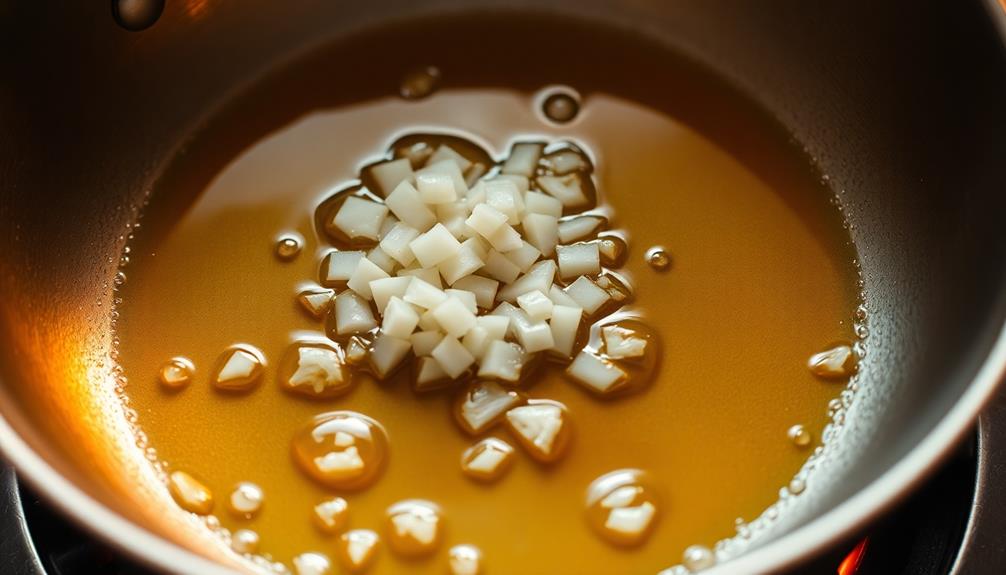
Gather your olive oil and aromatic ingredients.
In a large, shallow pan, heat the olive oil over medium heat. Once it's shimmering, add the diced onions and sauté for 2-3 minutes, stirring occasionally, until they become translucent.
Next, toss in the minced garlic and stir for an additional minute, being careful not to let the garlic burn.
Now, it's time to add the finely chopped tomatoes. Cook for 5-7 minutes, allowing the tomatoes to break down and the flavors to meld.
Sprinkle in a pinch of paprika and a dash of dried thyme, then give everything a good stir.
Let the aromatic mixture simmer for a couple of minutes, allowing the spices to bloom and infuse the oil.
Once the sautéed aromatics are fragrant and well-combined, you're ready to move on to the next step in crafting your authentic Valencian paella.
Step 2. Add Rice and Saffron
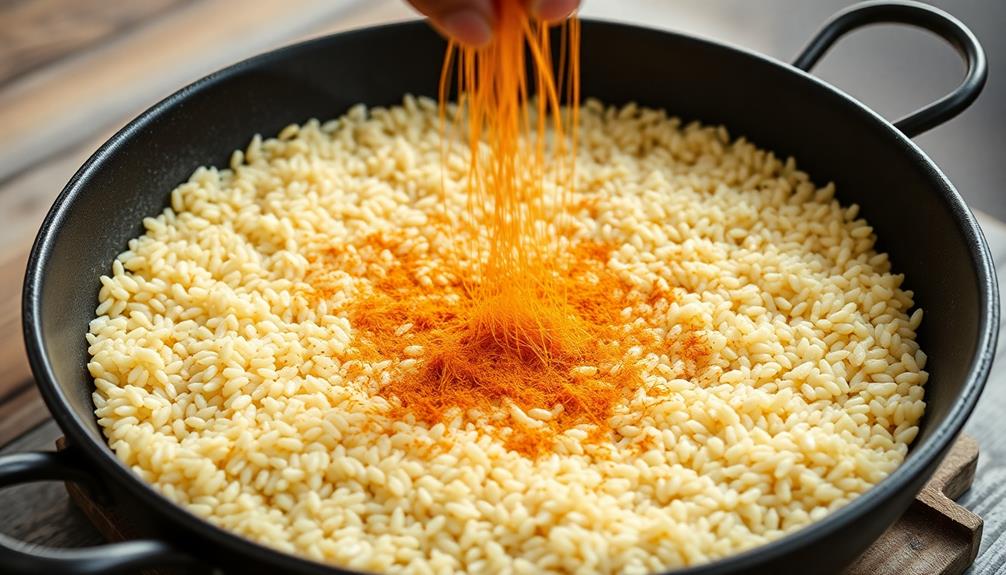
With the aromatic base prepared, it's time to add the rice and saffron. Pour in the short-grain Valencian rice and gently stir to coat each grain in the flavorful oil. This special rice is essential for achieving the signature texture of paella – firm yet creamy.
Next, sprinkle in the vibrant threads of saffron. This precious spice not only lends its golden hue to the dish but also imparts a unique, earthy aroma. Gently mix the saffron into the rice, ensuring its flavor is evenly distributed.
Now, pour in the hot broth, making sure to cover all the rice. Bring the mixture to a boil, then reduce the heat to maintain a gentle simmer.
Allow the rice to cook, undisturbed, for about 15-20 minutes, or until it has absorbed the flavorful broth and achieved the perfect bite.
Step 3. Add Chicken and Sausage
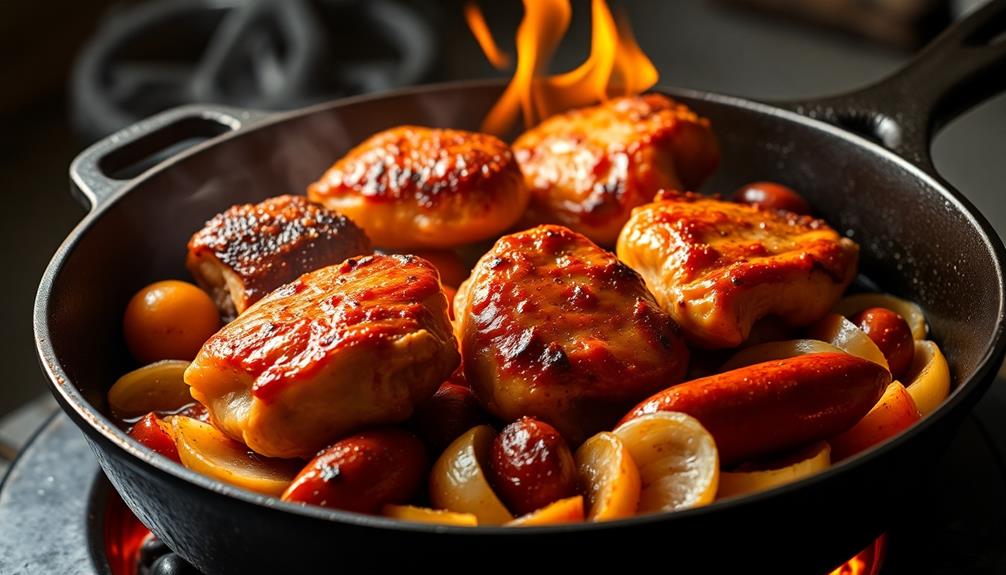
Once the rice has had a chance to absorb the flavorful broth, it's time to add the chicken and sausage. Nestle the chicken pieces into the rice, making sure they're submerged in the liquid. The sausage can be sliced and scattered over the top.
This step adds heartiness and depth of flavor to the paella. The chicken will cook through, becoming tender and infusing the dish with its savory goodness. The sausage, meanwhile, will release its spices and oils, creating a wonderful aroma and complementing the other ingredients.
Be sure to stir everything together gently, taking care not to break up the rice grains. Allow the paella to continue simmering until the chicken is cooked through and the sausage is heated. This should take about 15-20 minutes.
Keep an eye on the liquid level, adding a bit more broth if needed to prevent the rice from drying out. With the chicken and sausage now incorporated, the paella is well on its way to being a complete and delicious meal.
Step 4. Add Seafood
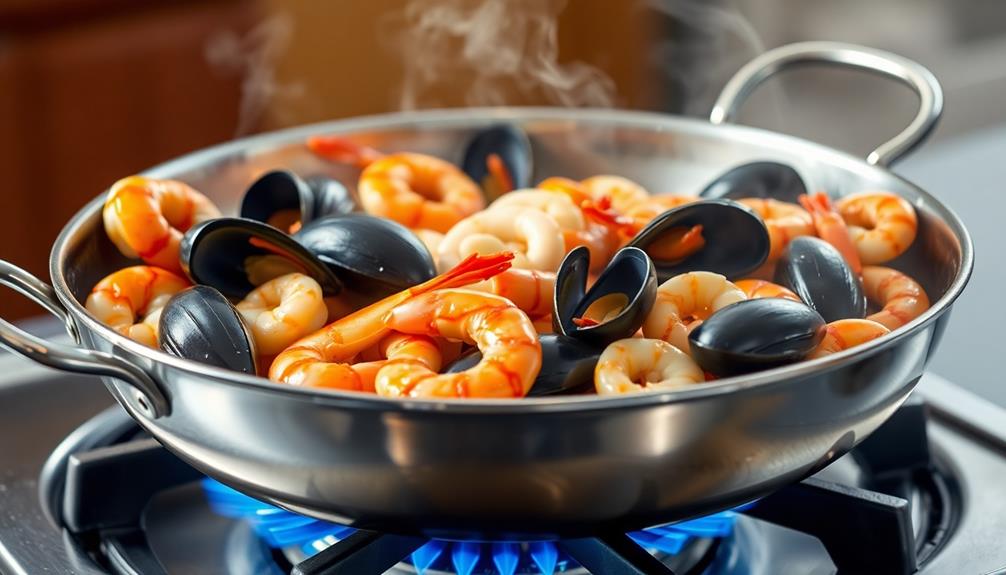
After the chicken and sausage have been incorporated, it's time to add the seafood that will truly make this Valencian paella shine.
First, add a handful of fresh prawns, peeled and deveined, to the pan. Gently nestle them into the rice, being careful not to overcrowd.
Next, toss in some mussels, scrubbed and debearded. Their briny flavor will perfectly complement the other ingredients.
Don't forget the star of the show – chunks of white fish, such as cod or haddock. Gently lower these into the pan, making sure they're submerged in the saffron-infused broth.
As the seafood cooks, it will release its juices, further enhancing the overall flavor.
Step 5. Simmer Until Rice Is Tender
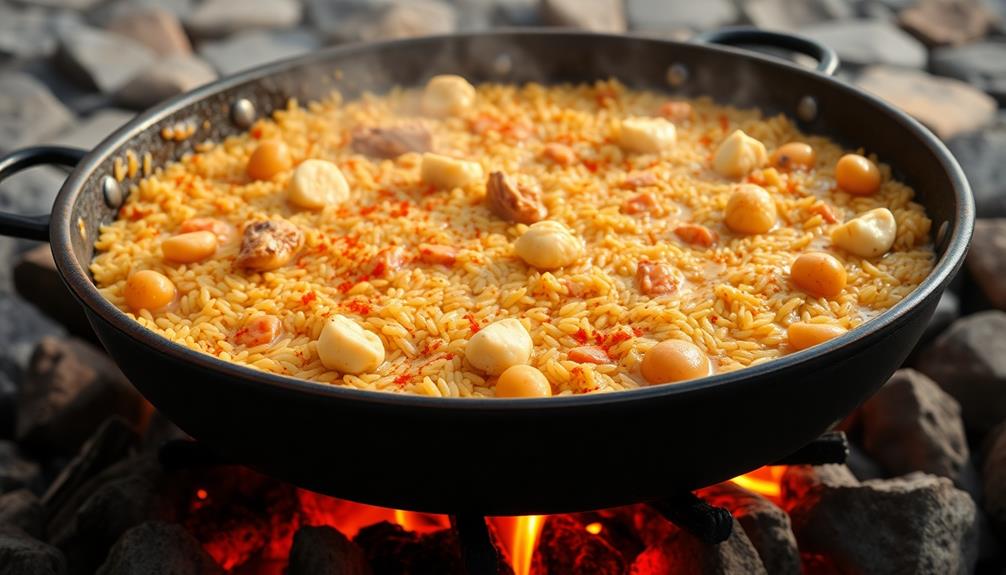
Now that the seafood has been added, it's time to let the paella simmer until the rice is tender. Reduce the heat to medium-low and allow the dish to gently simmer, uncovered, for about 20-25 minutes. This slow simmering allows the flavors to meld together and the rice to become perfectly cooked.
As the paella simmers, keep an eye on it, stirring occasionally to prevent sticking or burning. You'll know the rice is done when it's tender but still has a slight bite to it. The liquid should be mostly absorbed, but the paella shouldn't be dry. If needed, you can add a splash of hot broth or water to adjust the consistency.
Once the rice is tender, remove the paella from the heat. Let it rest for 5-10 minutes to allow the flavors to further develop before serving. This resting period is crucial, as it ensures the rice continues to cook and the overall dish achieves its signature texture.
Final Thoughts
Paella is a dish that encapsulates the essence of Valencian culture. When you've followed the steps to create the perfect Valencian paella, the final result is a true celebration of the region's flavors and traditions. The saffron-tinged rice, tender-crisp vegetables, and succulent proteins come together in a harmonious symphony on the plate.
As you savor each bite, you'll be transported to the sun-drenched plazas and lively markets of Valencia. The vibrant colors and aromas will ignite your senses, evoking the spirit of this vibrant Mediterranean city.
Paella isn't just a meal; it's a shared experience that brings people together, fostering conversation and creating lasting memories.
Whether you're hosting a family gathering or entertaining friends, serving Valencian paella is a surefire way to impress and delight. So don't be afraid to experiment and put your own twist on this iconic dish – the possibilities are endless when you embrace the rich culinary heritage of Valencia.
Frequently Asked Questions
How Long Does It Take to Prepare Paella Valenciana?
Preparing a dish can take time, doesn't it? For Paella Valenciana, you'll need about 1-2 hours to gather the ingredients, cook the rice, and assemble the dish. The exact time may vary depending on your experience and familiarity with the recipe.
What Type of Rice Is Best for Paella Valenciana?
The best type of rice for paella is a short-grain, medium-grain, or round rice like Bomba or Calasparra. These rices have the right texture and starch content to soak up the flavorful broth and produce the characteristic creamy, toothsome paella.
Can Paella Valenciana Be Made Vegetarian or Vegan?
You can absolutely make a vegetarian or vegan version of paella. Swap out any meat or seafood for your favorite veggies and use a plant-based broth to create a delicious meat-free dish.
How Do I Ensure the Proper Socarrat (Crispy Rice) in Paella Valenciana?
To get the perfect socarrat, ensure your rice is spread evenly in the pan, use the right amount of liquid, and let it cook undisturbed until it develops a crispy, golden-brown crust on the bottom.
Is Paella Valenciana Gluten-Free?
Yes, paella valenciana is typically gluten-free. The dish is made with rice, vegetables, and meat or seafood, without any wheat-based ingredients. As long as you avoid any sauces or accompaniments that contain gluten, you can enjoy paella valenciana on a gluten-free diet.

